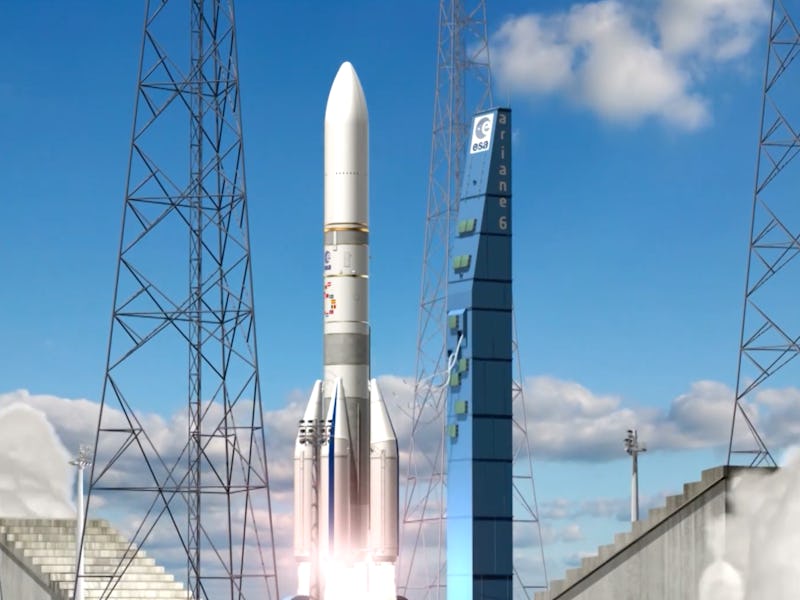The European Space Agency (ESA) just released a new animated video illustrating how its upcoming Ariane 6 rocket system will work. It’s a powerful rocket that’s supposed to help Europe maintain its competitive in the commercial launch industry without having to rely on the private sector for support. But with the dawn of reusable rockets upon us, the Ariane 6 is also an underwhelming one-and-done sort of system — you won’t see this thing pulling off any Falcon 9-esque epic landings anytime soon.
Right now, the ESA’s rocket Ariane 5 is the major player in the commercial satellite launch market. But its position is being challenged by American companies like SpaceX. And whether Ariane 6 can hold up against the rockets of SpaceX and other companies is questionable.
ESA has currently scheduled Ariane 6’s maiden flight for 2020. And the new rocket is designed to save the agency money — it’s estimated that launch service costs will be halved, and ESA plans to reuse Ariane 5’s engines to save even more money.
But so far, SpaceX’s Falcon 9 is cheaper than Ariane 5 since it uses reusable design, and it will continue becoming cheaper if its flights are successful. Boosters cost over $60 million, but SpaceX is working to make it the landing and reuse of its first-stage boosters a routine process, which would drastically cut flight costs and increase the potential for Elon Musk’s goals of making a human colony on Mars possible. Meanwhile, Ariane 6 is an expendable rocket — once it goes up into space, it’s not coming back. Any money poured into its construction and launch is lost for good.
Although in the short term the Ariane 6 may be cost-efficient, in the long term the rocket design may be obsolete. Last July, Jean-Yves Le Gall, president of French space agency CNES, suggested there was no urgency in developing a reusable rocket.
“Today, given the objectives for Ariane 6, it seems the vehicle will be well-placed in the market,” Le Gall said. “And if there is a further series of cost cuts in the market we’ll evaluate that when we see it.”
The Ariane 6 uses solid propulsion boosters. It has two configurations, depending on the required performance. The Ariane 62 configuration, uses two boosters for single-launch configurations like launching a medium-sized spacecraft into orbit for imaging and studying Earth. Ariane 64, the other configuration, uses four boosters for double launch.
The launcher’s preliminary design was completed in June 2016, and the launchpad is at Europes Spaceport in Kourou, French Guinea. Although engineers are evaluating what it might take to make the rocket partially reusable, reusability isn’t a major priority for the Ariane 6.
